Design Development Process
Delving into the solution of collecting space debris and defunct satellites, a pivotal question arose: What avenues existed for utilizing these materials once they were gathered? Surely, there had to be a space market where we could either trade or repurpose the materials we collected. In our envisioned future scenario, we meticulously crafted a narrative that highlighted the demand for such materials, driving the necessity for their collection and utilization.
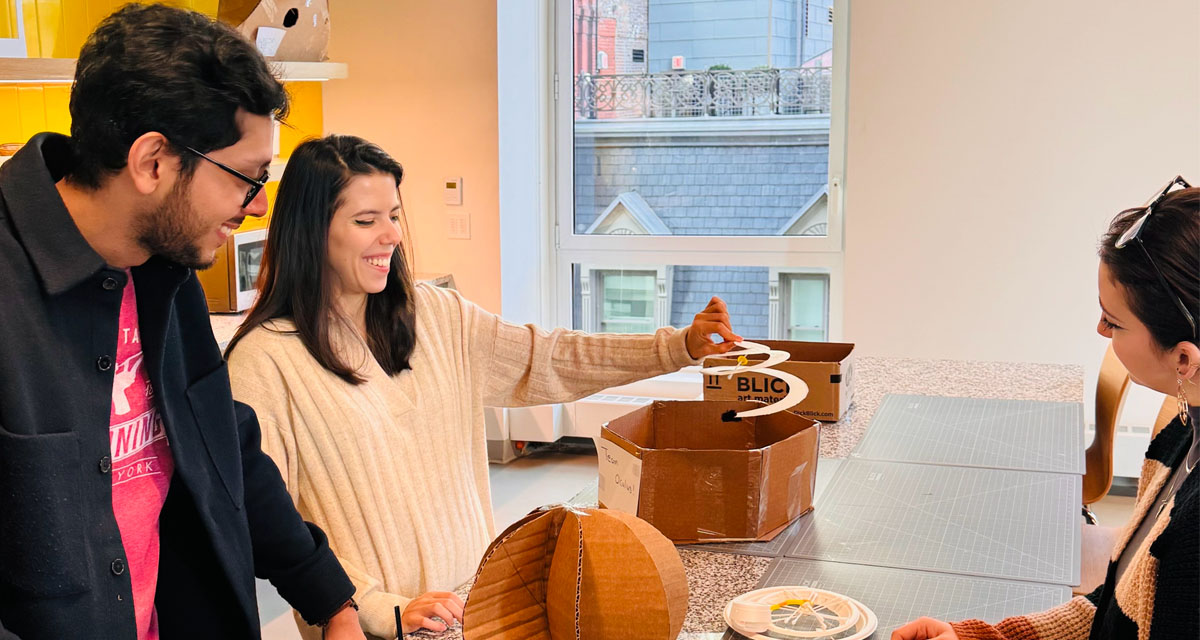
Space’s Industrial Age: Reusing Space Junk
In the scope of our possible future scenario, humanity has reached a stage where space is no longer just a realm for exploration and scientific research but has become a hub of industrial and commercial activities. There is still a growing amount of space debris or “space junk” left behind by previous missions, defunct satellites, and discarded rocket stages that was never addressed.
This industrial age in space is driven by an expanding space economy, where companies and nations are actively involved in activities such as asteroid mining, space tourism, manufacturing in zero gravity, and satellite servicing. With the increased human activity in space on top of the current state of things, there is massive concern about the accumulation of space debris. This debris poses a risk to operational spacecraft and satellites, essentializing the development of solutions to manage and mitigate this issue. Reusing or repurposing space junk not only contributes to the sustainability of space activities but also enhances the efficiency and cost-effectiveness of space missions, as it reduces the reliance on Earth-based resources and minimizes the need for new manufacturing in space.
The industrial age in space is identified by the transformation of space debris from a hazard into a valuable resource, marking a significant leap in our ability to harness the potential of space while addressing the challenges that come with increased human presence beyond Earth.
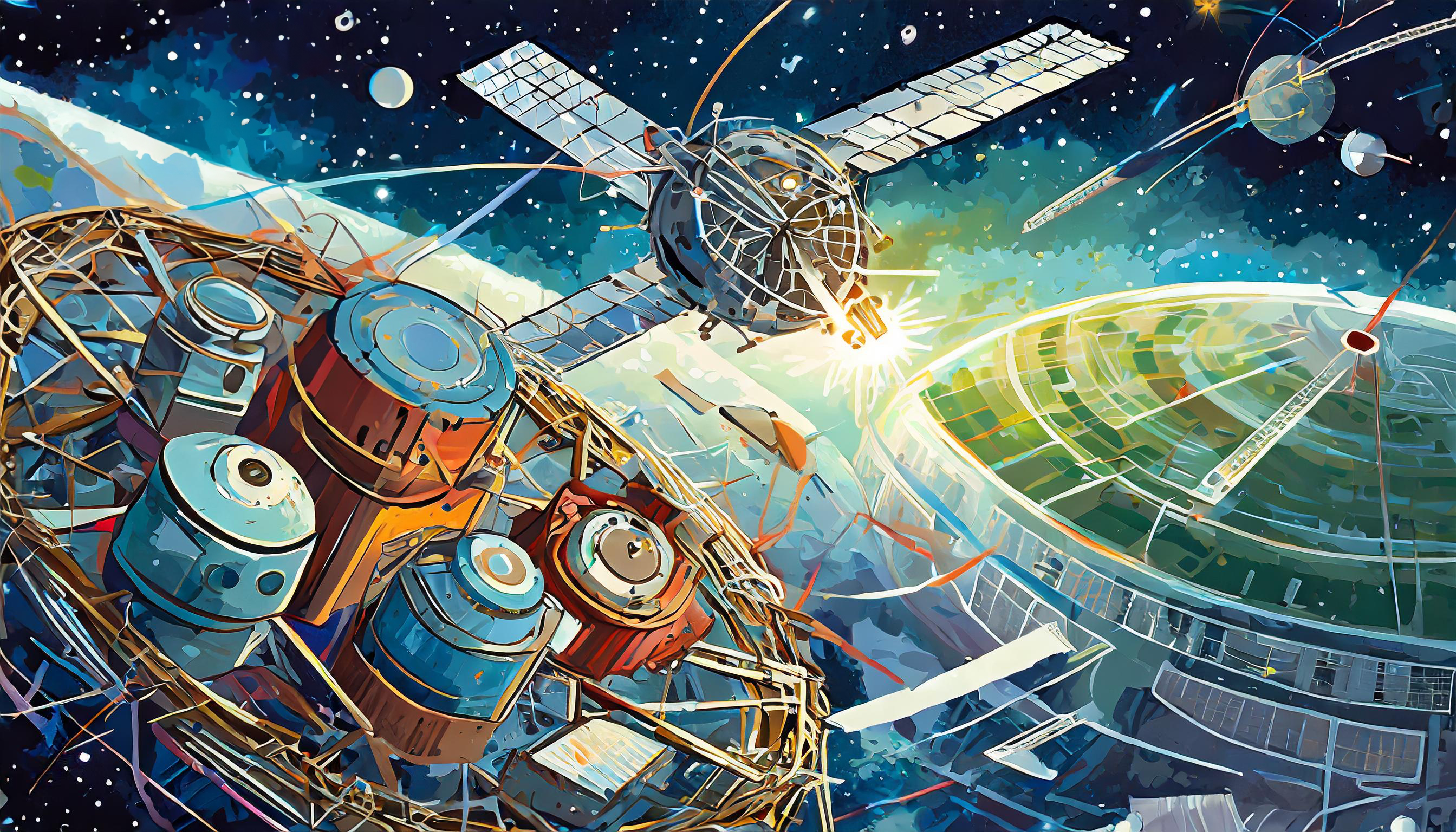
Diving deeper into the futuristic mindset, it became apparent that quantifying the issue of space debris was crucial for engaging prospective stakeholders. We recognized the necessity of conveying the severity of space debris and highlighting how the lack of attention given to the problem will only encourage it to proceed. The mere discussion of the Kessler Syndrome proves insufficient; we need to address the underlying reasons why companies persist in launching satellites despite the associated risks.
Uncovering Industry Insights
To gain a comprehensive understanding, Oculus member Liza engaged with a professional in the satellite industry. Through this interaction, it was revealed that satellites routinely maneuver to avoid collisions, resulting in lost data and resource depletion. For instance, if a satellite loses ten minutes of data collection during a maneuver, it is deemed more cost-effective for companies to launch additional satellites to compensate for the lost time rather than invest in space debris removal or post-mission disposal (PMD) strategies. This practice led us to see that the cost of building and launching satellites has been decreasing over the past few years.
During Liza’s inquiry, she stumbled upon OrbitFab, a pioneering startup specializing in the development of in-space refueling systems for satellites. OrbitFab’s innovative approach holds the promise of significantly mitigating the challenges posed by space debris while fostering a more sustainable and efficient space industry.
We have now uncovered the potential of utilizing the collected and processed materials from space debris as fuel. This presents an exciting opportunity to not only mitigate the hazards posed by space debris but also to harness an underlying value, thereby propelling us closer to a future where space debris is no longer a menace, but a valuable resource in the industrial landscape of space.
Formulating the Design of Our Solution
As we ventured into the realm of solution design, it was important to acknowledge the role of weight in shaping the cost dynamics of space operations. Recognizing that weight is a significant contributor to the overall cost, more specifically the launch cost, we are inclined to integrate this factor into the basis of our solution, ensuring that our design not only addresses the challenges posed by space debris but also optimizes cost-efficiency through strategic weight management.
Acknowledging the impact of weight on operational and launch costs, our design will prioritize the optimization of the weight of our proposed debris catcher. By carefully assessing the necessary technologies and materials used in our solution, we aim to lessen payload weight without compromising functionality or structural integrity. This extra emphasis on weight optimization will serve as a means of shaping our solution. We began by sketching various designs to explore different forms and then determined the placement of each technology based on its function.
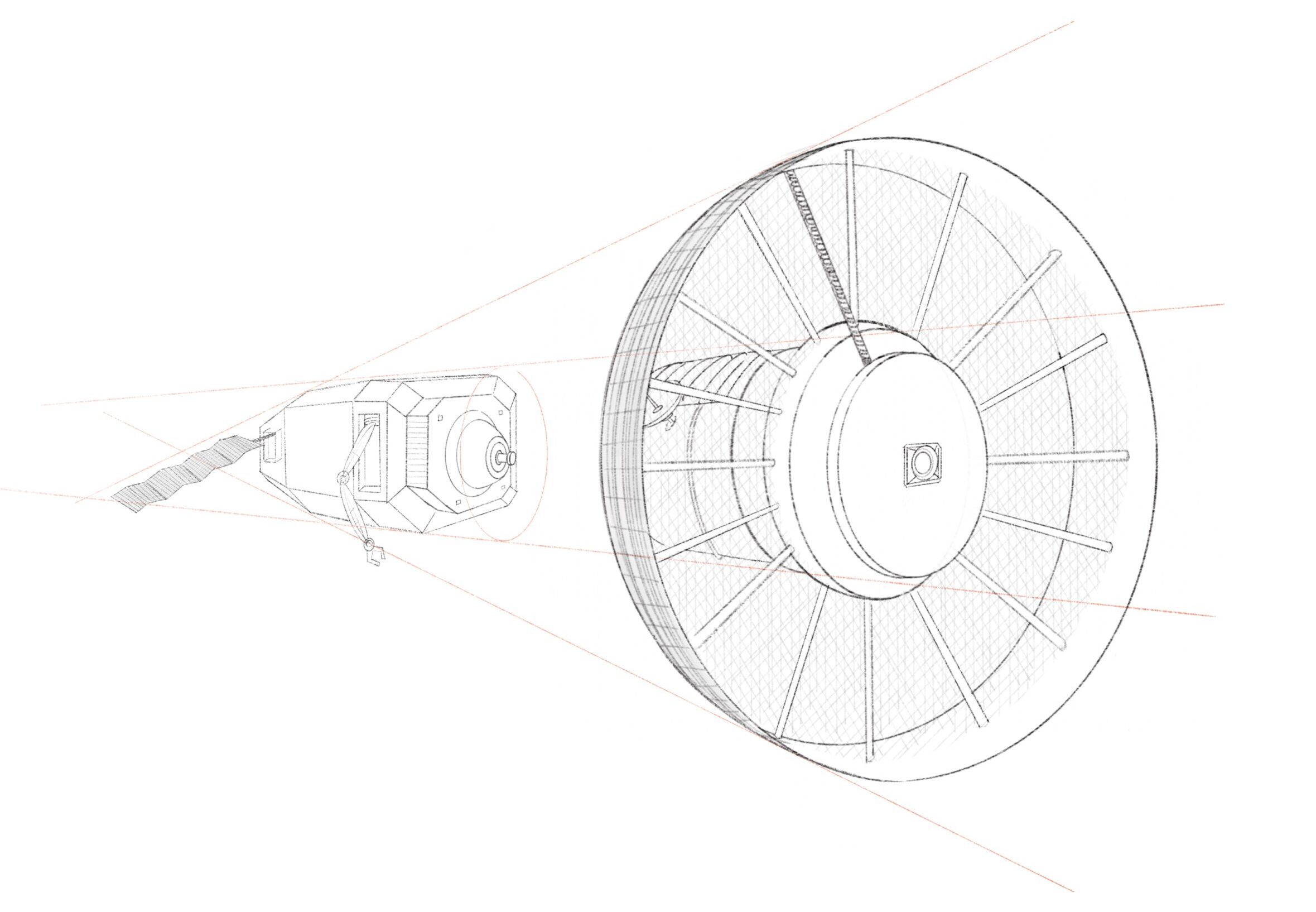



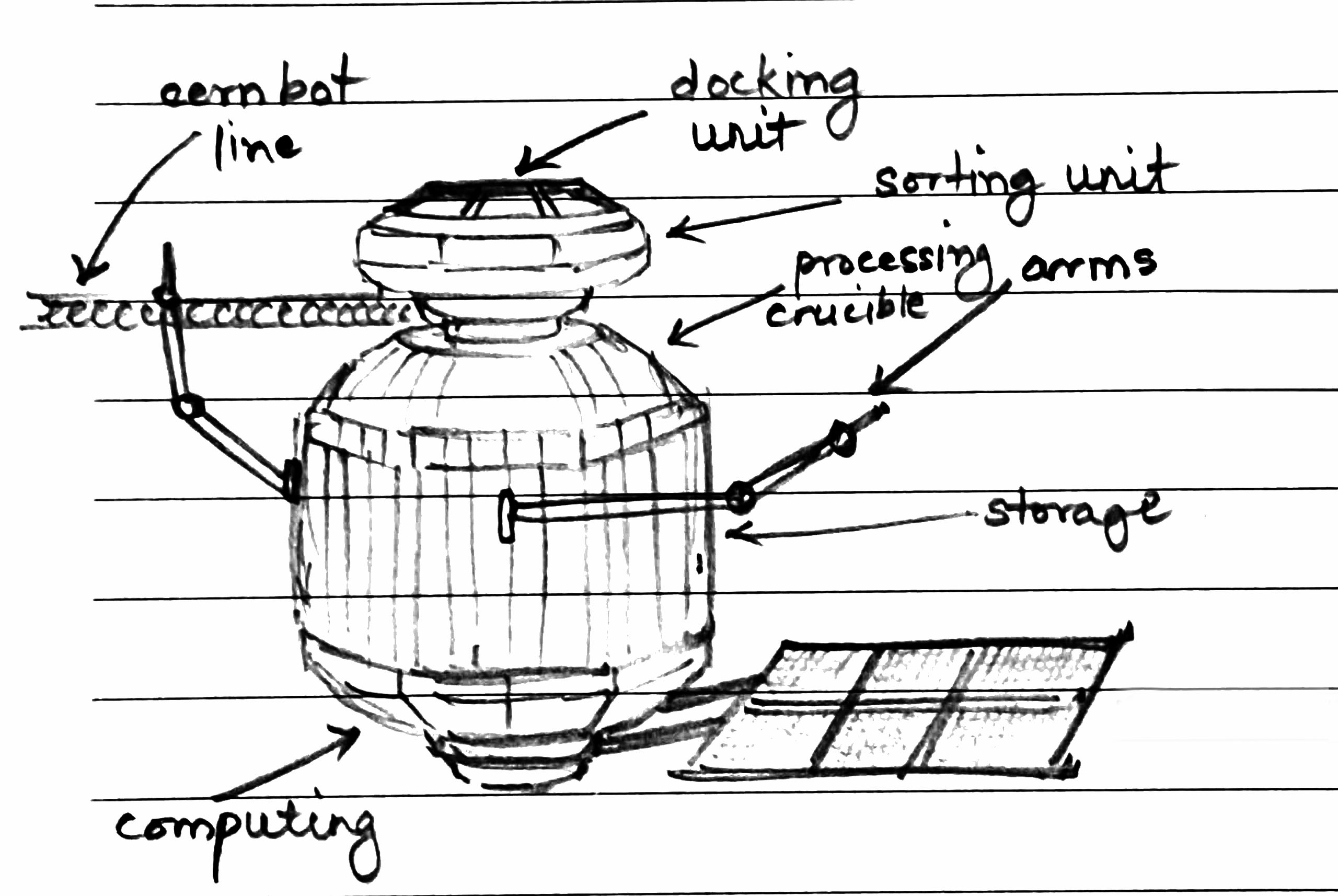
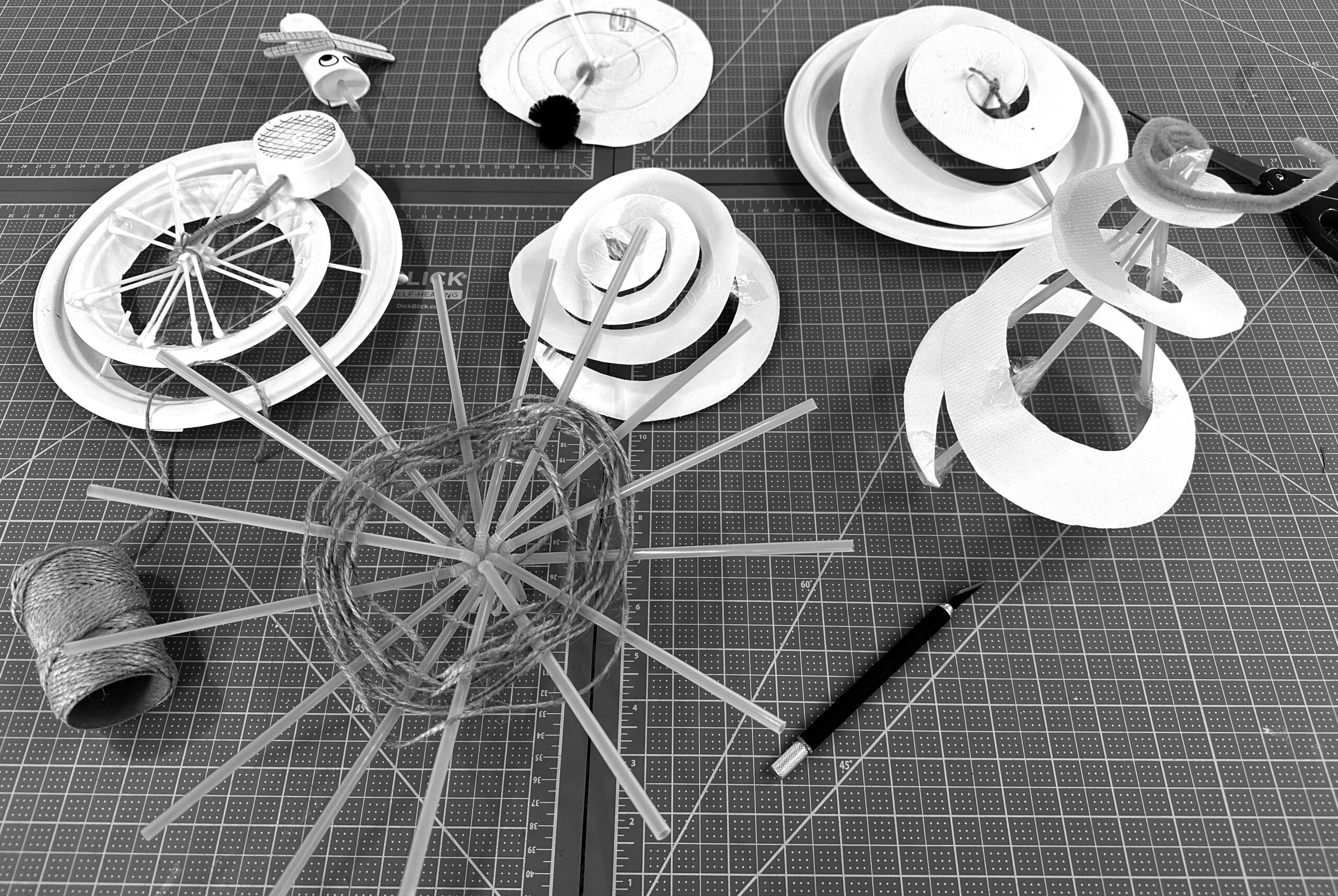
Cultivating Awareness and Amplifying Impact
As we navigate through the web of our solution design, we must also extend our focus beyond the technical nuances and explore the outreach of promoting awareness of our problem space. We seek to obtain widespread awareness regarding the severity of space debris and are committed to our mission of engaging the general public, industry stakeholders, and policymakers to understand the severity of this issue.
Our discussions on behavior change and ongoing dialogues with NYCDF faculty have prompted us to consider how we can foster accountability among stakeholders regarding space debris and raise awareness among individuals.
Consequently, at the core of our design philosophy now lies the empowerment of both individuals and organizations through transparency and knowledge dissemination. By highlighting the consequences of space debris on satellite operations, the risks it poses to future space missions, and its broader implications for the sustainability of our low Earth orbit (LEO) environment, we aim to provide stakeholders with the necessary insights to grasp the magnitude of this challenge. This proactive dissemination of knowledge forms the foundation of our efforts to inspire informed action and advocacy.
Through captivating visual installations, interactive exhibitions, and the gamification of our problem, we seek to elucidate the intricate dynamics of space debris in an accessible and engaging manner.
Stay tuned for our next post where we will be taking these findings and developing them into a thoughtful solution path!


Recent Comments